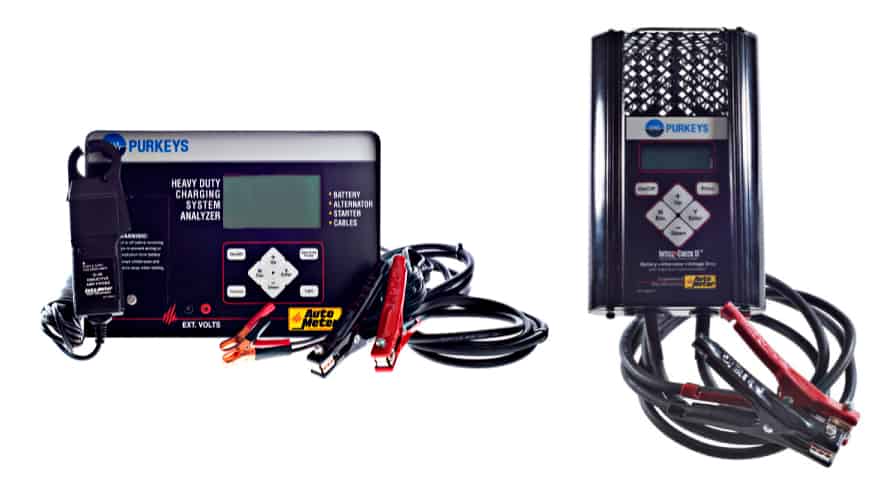Running preventative maintenance tests on a regular basis (at least every 6 months) is an opportunity to help keep drivers from experiencing unexpected problems or getting stuck in situations with a bad battery, cable, or alternator. These tests also help identify voltage drop and other problems you may be experiencing.
Preventative maintenance is particularly important as winter approaches, because the cold is hard on vehicles—especially batteries.
This is because heat kills/deteriorates the battery, then the cold makes it work harder. Testing before winter is a good preventative measure because most issues appear in winter when the deteriorated battery is working harder to run. For this reason, batteries last longer in Northern states than they do in Southern states, due to weather differences.
These tests can be conducted on the battery, cables, and alternator by using an automated tester, or by using a multimeter and amp clamp. The advantage of an automated tester (such as the Purkeys Handheld and Benchtop Electrical Analyzers) is that they allow technicians to quickly and easily run the tests without taking excessive amounts of time and they provide accurate, repeatable results.
However, if you are using automated testing equipment, don’t forget to maintain it as well, or else the test results may be inaccurate.
TIPS for using and maintaining testing equipment:
- Pay special attention to the prompts the tester gives on the LCD. They will guide you through the testing process; doing so will allow for the best results.
- Keep your equipment clean and dry—it’s not waterproof.
- Recognize that the clamps on the leads are a wear item. If they are worn or dirty, the tester may not give accurate results. When your leads are worn out, replace them.
- If you are using the external leads, pay attention to how you are connecting the male lead. If it is not firmly inserted into the test fixture, the tester can provide inaccurate results.

